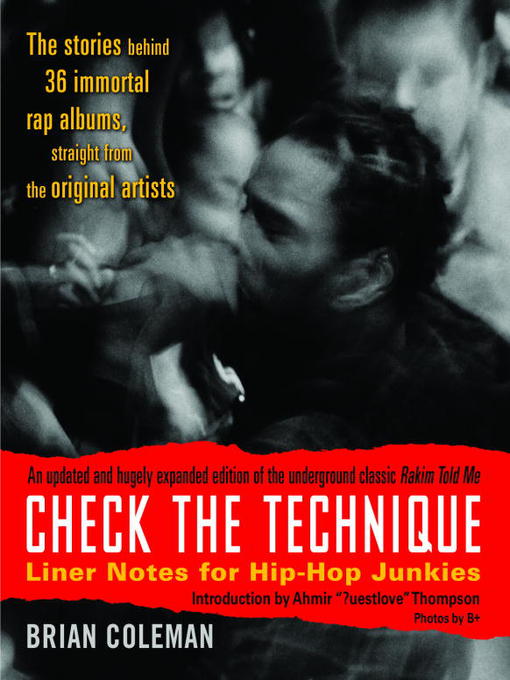
Check the Technique
Liner Notes for Hip-Hop Junkies
کتاب های مرتبط
- اطلاعات
- نقد و بررسی
- دیدگاه کاربران
نقد و بررسی

December 31, 2007
In his introduction to Coleman's new volume, recording artist Ahmir “?uestlove†Thompson laments the lack of liner notes in hip-hop recordings, and it's this void that Coleman seeks to fill in this significantly expanded and updated version of his 2005 title Rakim Told Me
. Each of Coleman's 36 “liner notes†cover one album by a particular artist, beginning with a thorough background essay from Coleman and continuing with comments on individual tracks by the artists, which range in length from a single line to page-spanning dialogue. Covering the period between 1986 (Schoolly D's Saturday Night! The Album
) and 1996 (Fugees' The Score
), sometimes described as the golden age of rap, Coleman's introductory essays are easy to read and informative, but the artists' comments are the more enlightening read. The artists focus largely on lyrics and their origins, but make many references to budgets, studio techniques, drum machines and sample sources (and the occasional lawsuit they engender). Though words like “genius,†“masterwork,†“legend†and “immortal†are tossed around too liberally, Coleman's volume, covering 400 tracks and 75 artists all told, is a valuable, entertaining inside look at the creative processes behind some of the bestselling albums of their (or any) time. 52 b&w photos.

July 16, 2007
In his introduction to Coleman's new volume, recording artist Ahmir "?uestlove" Thompson laments the lack of liner notes in hip-hop recordings, and it's this void that Coleman seeks to fill in this significantly expanded and updated version of his 2005 title Rakim Told Me. Each of Coleman's 36 "liner notes" cover one album by a particular artist, beginning with a thorough background essay from Coleman and continuing with comments on individual tracks by the artists, which range in length from a single line to page-spanning dialogue. Covering the period between 1986 (Schoolly D's Saturday Night! The Album) and 1996 (Fugees's The Score) sometimes described as the "golden age" of rap, Coleman's introductory essays are easy to read and informative, but the artists' comments are the more enlightening read. The artists focus largely on lyrics and their origins, but make many references to budgets, studio techniques, drum machines and sample sources (and the occasional lawsuit they engender). Though words like "genius," "masterwork," "legend" and "immortal" are tossed around too liberally, Coleman's volume, covering 400 tracks and 75 artists all told, is a valuable, entertaining inside look at the creative processes behind some of the best-selling albums of their (or any) time. (52 b/w photos)
Copyright 2007 Library Journal, LLC Used with permission.

























دیدگاه کاربران